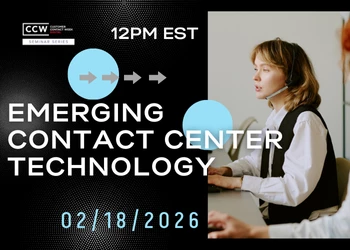Service Level - The Indispensible Call Center Metric
Add bookmark
Show me a call center that does not bother to measure Service Level – and do so correctly – and I’ll show you a call center that likely struggles in practically every key area of customer contact management. Service Level is THE metric for gauging accessibility, and as such it is tied to and has an immense impact on customer satisfaction, workforce management decisions, call center budgeting/costs, and agent sanity.
Service Level (SL) is defined as X percent of calls (or chat sessions) answered in Y seconds. A common (but NOT an industry standard!) SL objective is to answer 80 percent of all customer calls in 20 seconds – typically stated as "80/20." This means that out of every 100 calls, the call center aims to route at least 80 of them to a live agent within 20 seconds. If the agent to whom a call is routed is not alive, its best to dispose of the body immediately before it affects the health and/or morale of others on the team.
So why doesn’t every call center strive to answer 100 percent of calls in 20 seconds (or 15 seconds, or 10 seconds)? Well, while doing so would positively delight customers, they would not remain delighted for very long, as the company they are calling would likely go out of business. To deliver on a 100/20 or 100/15 SL objective, a call center would require a daily staffing budget bigger than the CEO’s country club dues. (The exception, of course, is emergency services call centers – e.g. 911 centers – which must answer 100 percent of calls in a very short period of time by law, and are thus staffed/funded accordingly.)
[eventPDF]
Such infeasible SL objectives aren’t even necessary; most customers don’t mind waiting 20 or 30 seconds or even a little more before reaching a live agent – especially if they are informed beforehand of the expected wait. That’s why many of the best call centers implement a "visible queue" tool – an automated attendant that tells callers the estimated time until an agent will be available. Studies have shown that call centers with visible queues are 74 percent less likely to be burned to the ground by a disgruntled customer and 26 percent more likely to not be burned to the ground by a disgruntled customer.
Now, an 80/20 SL objective does not indicate that the center ignores or doesn’t care about what happens to the 20 percent of calls not answered in 20 seconds; it simply means that those callers may experience longer wait times and be given a chance to sing or hum along with the call center’s on-hold music. Top call centers focus on side metrics such as Longest Current Wait Time and Number of Customer Curse Words per Hour to ensure that no callers are being avoided like the plague, and to stay abreast of call volume trends that may require real-time action to evade an accessibility crisis and/or customer revolt.
Selecting an SL Objective
So, what is the right SL objective for your call center? I have no idea – and neither does anybody else outside of your organization (except perhaps for an experienced consultant familiar with the ins and outs of your operation). The best SL objective depends on four variables specific to your center: Your average call volume, your customer’s expectations and tolerance levels, your staffing budget, as well as the SL objective of competing call centers in your industry (though, still, you don’t want to just play copy-cat, as other key variables may differ).
That is not to say that there aren’t some common SL objectives shared by many centers – e.g., 80/20, 80/30, 90/20, 90/30. However, just arbitrarily picking one of these objectives without first conducting careful analysis of your call center’s resources and your customers’ expectations will often lead to either very angry callers (and agents) or very angry executives (and stockholders) – or both.
Keep Quality in the Equation
Of course, no conversation about SL is complete without mentioning quality. You could take the time to carefully select a solid SL objective and consistently achieve that objective (without going too far over, as that indicates costly over-staffing), but it won’t mean jack squat if those calls that are routed quickly are being handled sloppily. Accessibility means nothing without quality. Getting seated immediately at a trendy, popular restaurant is great, but not if the maitre d' laughs at your tie, the waiter spills your wine, and the cook burns your steak.
Leading call centers understand this, and therefore never let efficiency supersede proficiency and professionalism. From the moment a new agent is hired, these centers indoctrinate them into a customer-centric service culture where things like empathy, accuracy and not comparing customers unfavorably to microorganisms are strongly emphasized and coached to. When such behaviors and values are encouraged and embodied, fewer mistakes are made, fewer call-backs are required, and fewer agents and customers burst into flames – thus making it much more likely that the call center (assuming good forecasting and scheduling has occurred) will meet or even exceed its SL objective.




















